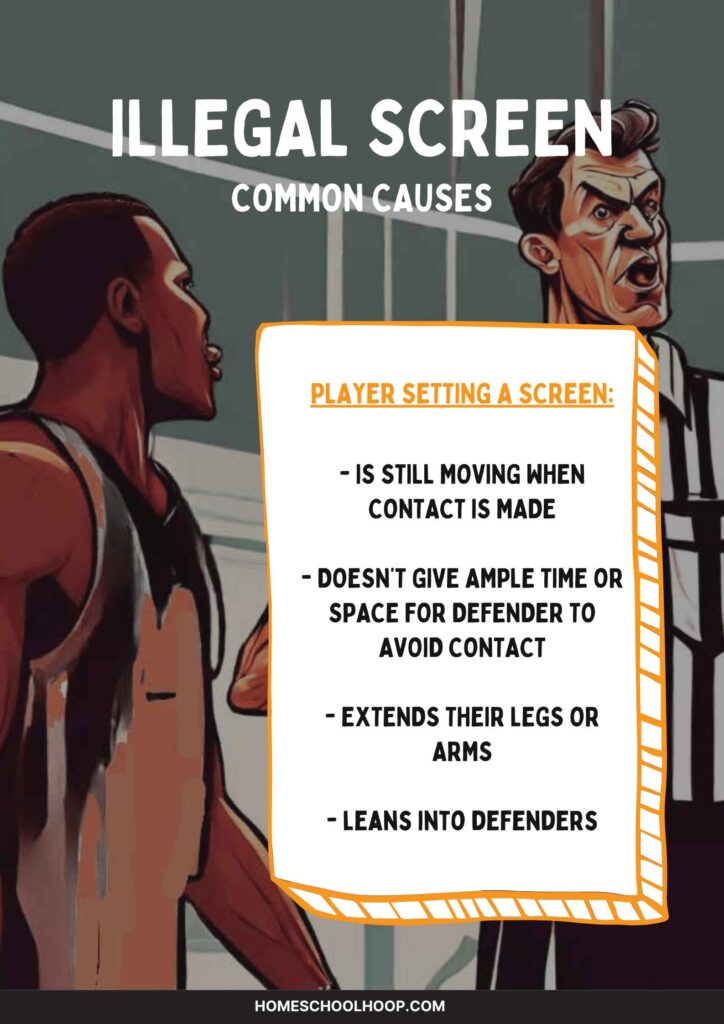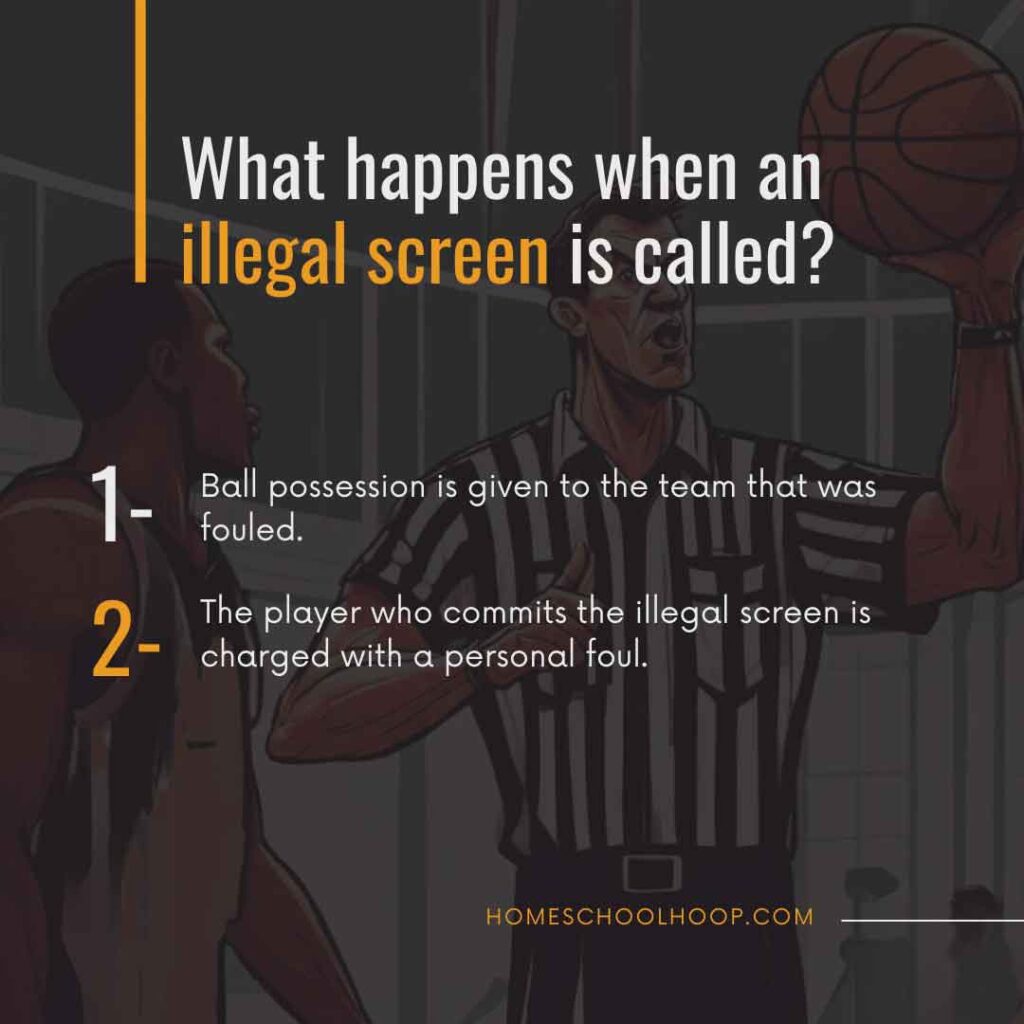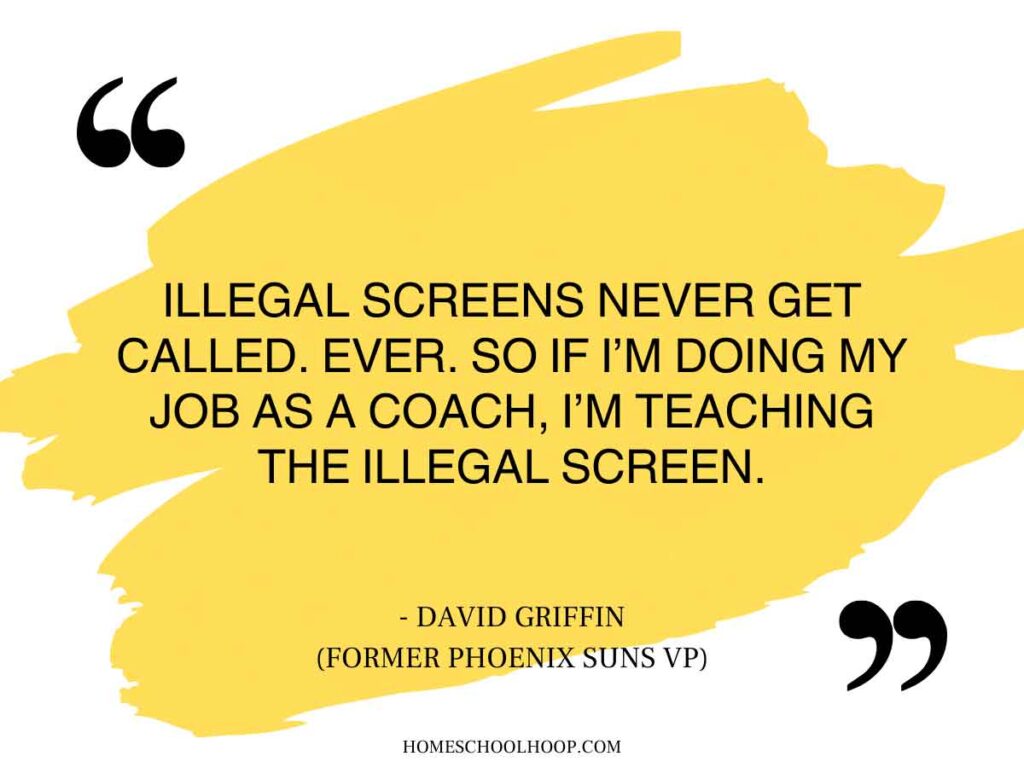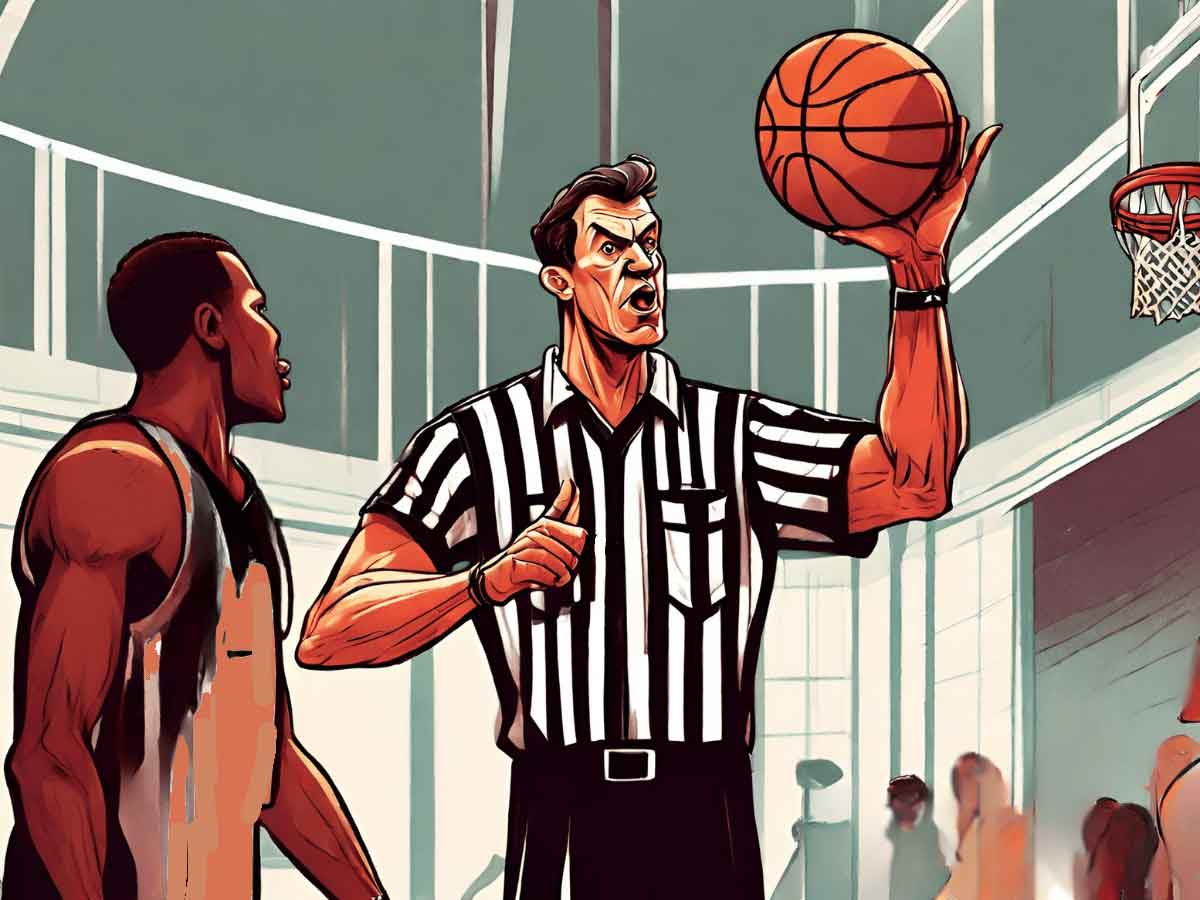Setting screens is a fundamental part of offensive play. However, there’s a right and a wrong way to do it. If a player sets a screen incorrectly, it results in an illegal screen in basketball, which can hand possession over to the opposing team and add to the player’s foul count.
Key Takeaways:
- An illegal screen in basketball occurs when an offensive player, while trying to block a defender with their body (screening), moves or sticks out a body part.
- Committing an illegal screen leads to a turnover and adds a foul to the player’s total.
- Players can prevent being called for an illegal screen by staying still and not leaning or reaching out with their arms or legs when making contact with an opponent.
In this guide to illegal screens, we’ll dive into the details of what makes a screen illegal versus legal. We’ll examine why players often get called for this foul and the effects of these calls on the game.
What is an Illegal Screen in Basketball?
Screening is a widely used offensive tactic. A screen in basketball is when an offensive player uses their body as a barrier to block or ‘screen’ a defender. This move helps a teammate get open for a shot or a pass by momentarily stopping the defender from following them.
But, there’s a caveat; players have to perform these screens a certain way for them to be allowed.
Illegal screen definition: When the player setting the screen moves as they make contact with the defender or doesn’t give the defender at least one step to avoid the screen.
This can include shifting their feet, leaning, or extending arms or legs.

So, for it not to be an illegal screen in basketball, a screener must:
- Be set in their position before the defender makes contact. If they are still moving into place when contact occurs, it’s considered illegal.
- Stay within their vertical plane with a stance roughly shoulder-width apart.
- Give the defender time and room to avoid the screen.
- Not extend their arms or legs to widen themselves outside of their normal stance.
- Avoid excessive or forceful contact during a screen, even if the screener is stationary, can also lead to an illegal screen call.
These rules apply whether setting a ball screen or off-ball screen.
Characteristics of an Illegal Screen
To further understand what makes a screen illegal, it’s important to know the characteristics.
Common Causes of Illegal Screens
Illegal screens in basketball most commonly occur because of four reasons:
- Moving: If a player setting a screen is still moving when contact is made, it’s considered an illegal moving screen. The screener must be stationary.
- Not Enough Time or Distance Given: Screeners need to set themselves one to two strides away so the player being screened has ample time to stop or change directions.
- Extending Limbs: An illegal screen can also occur if the screener sticks out an arm or leg to create more contact.
- Leaning: Leaning into defenders while setting a screen is another common cause. The screener’s body should be straight and not inclined towards the defender.
These actions contrast with a legal screen, where the screener remains stationary, keeps their limbs close to their body, and avoids leaning.
Examples of an Illegal Screen
Here are some examples from actual games that illustrate illegal screens:
- In this 2022 matchup between the Las Vegas Aces and Seattle Storm, Tina Charles illegally leans her hips into Kelsey Plum during a pick and roll screen. This prompts an illegal screen call by the WNBA official.
- While NBA officials don’t call the foul, in this example Draymond Green of the Golden State Warriors clearly doesn’t hold his position as he barrels through several players to create an open shot for Stephen Curry.
- A season later, Alaina Coates of the Aces shifts to the side to initiate contact while trying to set a back screen on Veronica Burton of the Dallas Wings, leading to an illegal screen call.
Illegal Screen Signal
When a referee calls an illegal screen, they use a specific signal to indicate the foul. Here’s how to call an illegal screen in basketball:
- The referee will blow their whistle and then extend their left arm with a closed fist overhead to signal a foul. They then extend one arm in the direction of the opposite end of the court, indicating the change of possession.
- This signal is universally recognized in basketball and immediately informs players, coaches, and fans of the offensive foul call.
The official will then verbally communicate the illegal screen foul call to the scorer’s table so it can be officially recorded.
TRIVIA:
Which famous game had a controversial no-call on an illegal screen that impacted its outcome and helped one team reach the NBA finals?
Clue 1: This game took place in the NBA Western Conference Finals in the late 1990s.
Clue 2: The winning team featured one of the most formidable duos in basketball history.
Clue 3: The winning team ended up losing to the Chicago Bulls in the NBA Finals.
Scroll to the bottom for the answer.
Penalties for Illegal Screening
Illegal screens have two immediate consequences:
- Turnover: The most direct outcome of an illegal screen is a turnover. The offensive team loses possession of the ball.
- Personal Foul: The player who commits an illegal screen is charged with a personal foul.
Offensive fouls like illegal screens do not count toward team fouls count. This means an illegal screen call won’t contribute to a team reaching the bonus in basketball.

Illegal screens disrupt the offensive team’s rhythm. Turnovers shift the game’s dynamics by giving the opposing team an additional chance to score.
For the player getting called for the illegal screen, accumulating personal fouls can impact their play. They may limit their aggressiveness on defense or get benched to avoid foul trouble.
Learn more: How many fouls to foul out in the WNBA
How to Avoid Illegal Screens
Avoiding illegal screens is crucial for keeping yourself out of foul trouble and ensuring your team doesn’t lose unnecessary possessions. Here are some tips to ensure your screens are legal and sound:
Tips for Players
- Stable Positioning: Get into a stable stance with feet shoulder-width apart. Make sure you’re set in your position before the defender makes contact.
- Stay Vertical: Keep your body straight and within your vertical plane. Avoid leaning or extending limbs outwards.
- Timing is Key: Set the screen at the right moment to give defenders enough time and space to react, reducing the risk of illegal contact.
- Practice Makes Perfect: Repetition helps in maintaining proper form during games.
Tips for Coaches
- Teach the Rules: Make sure your players understand what makes a screen illegal. Knowledge of the basketball rules is the first step in avoiding fouls.
- Drills on Screen Setting: Add drills that focus on proper screen setting into your training sessions. Emphasize positioning and timing, and call fouls in practice.
- Review Game Footage: Use game footage to point out both effective and illegal screens. Visual learning can help players recognize and correct their mistakes.
Note: As the quote below suggests, NBA coaches may approach teaching screens slightly differently, as NBA officials do not prioritize enforcing illegal screens.

FAQ about Illegal Screens
What is an illegal screen in basketball?
An illegal screen in basketball is when a player setting a screen moves, leans, doesn’t give the defender ample space, or extends limbs to block the defender, which is a foul.
How do you set a legal screen in basketball?
To set a legal screen in basketball, give the defender a stride of space, stand still with your feet shoulder-width apart, keep your arms and legs close to your body, and avoid moving when the defender makes contact.
Is a moving screen a foul in basketball?
Yes, a moving screen is a foul in basketball. It happens when the player setting the screen is not stationary and moves into the defender.
What makes a screen illegal?
A screen becomes illegal when the player setting it moves, leans, extends arms or legs, or initiates contact with the defender.
What is the illegal screen basketball rule?
The illegal screen rule in basketball states that a player cannot move, lean, or extend their limbs while setting a screen, and must give the defender a fair chance to avoid contact.
What does illegal screen mean in basketball?
An illegal screen in basketball means a foul committed by the offensive player who improperly sets a screen, which involves movement or excessive contact with defenders.
LET US KNOW
Today, you learned about illegal screens in basketball.
So we want to know: Do you recall any game where an illegal screen call was particularly controversial or game-changing?
Share the game and your perspective on that call in the comments.
The TRIVIA answer is Utah Jazz vs. Houston Rockets, Game 6 – Western Conference Finals, 1997.

